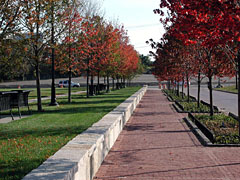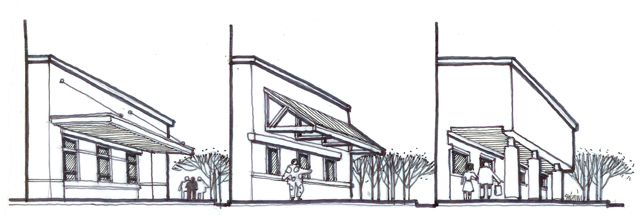|
 Pedestrian-oriented site planning and design can contribute much to the convenience, comfort and enjoyment of daily activities. Land use and transportation planning should strive to minimize necessary auto trips by locating related activities together and developing a balanced transportation system which encourages pedestrian, bike and public transit as attractive alternatives to the automobile. The use of walkways within the installation promotes development sustainability by conserving energy, reducing air pollution, and decreasing the land requirement for parking. These walkways also provide a means to increase physical fitness while improving morale and retention as a quality of life initiative. Pedestrian-oriented site planning and design can contribute much to the convenience, comfort and enjoyment of daily activities. Land use and transportation planning should strive to minimize necessary auto trips by locating related activities together and developing a balanced transportation system which encourages pedestrian, bike and public transit as attractive alternatives to the automobile. The use of walkways within the installation promotes development sustainability by conserving energy, reducing air pollution, and decreasing the land requirement for parking. These walkways also provide a means to increase physical fitness while improving morale and retention as a quality of life initiative.

The following tactics may be implemented to encourage pedestrian
circulation:
Pedestrians:
- Provide convenient routes, which are easy, safe and attractive to
use.
- Provide clear signposting and lighting where appropriate.
- Ensure that routes are accessible to disabled people,
particularly wheelchair users.
- Ensure that there is good, direct permeability throughout the
site.
- Link routes to facilities, public transport nodes, open spaces
and longer distance footpaths.
- Design for slow traffic speeds to improve safety and reduce
noise.
- Provide conveniently located pedestrian crossing points on busy
sections of road.
- Avoid steep gradients.
- Provide a pleasant microclimate through planting to provide
shelter and orientation towards the sun, although care should be
taken to ensure that routes are safe for all to use.
- Provide wayside seating at appropriate locations.

Figure 1. Pedestrian circulation and protection from inclement weather should be considered with design
|

